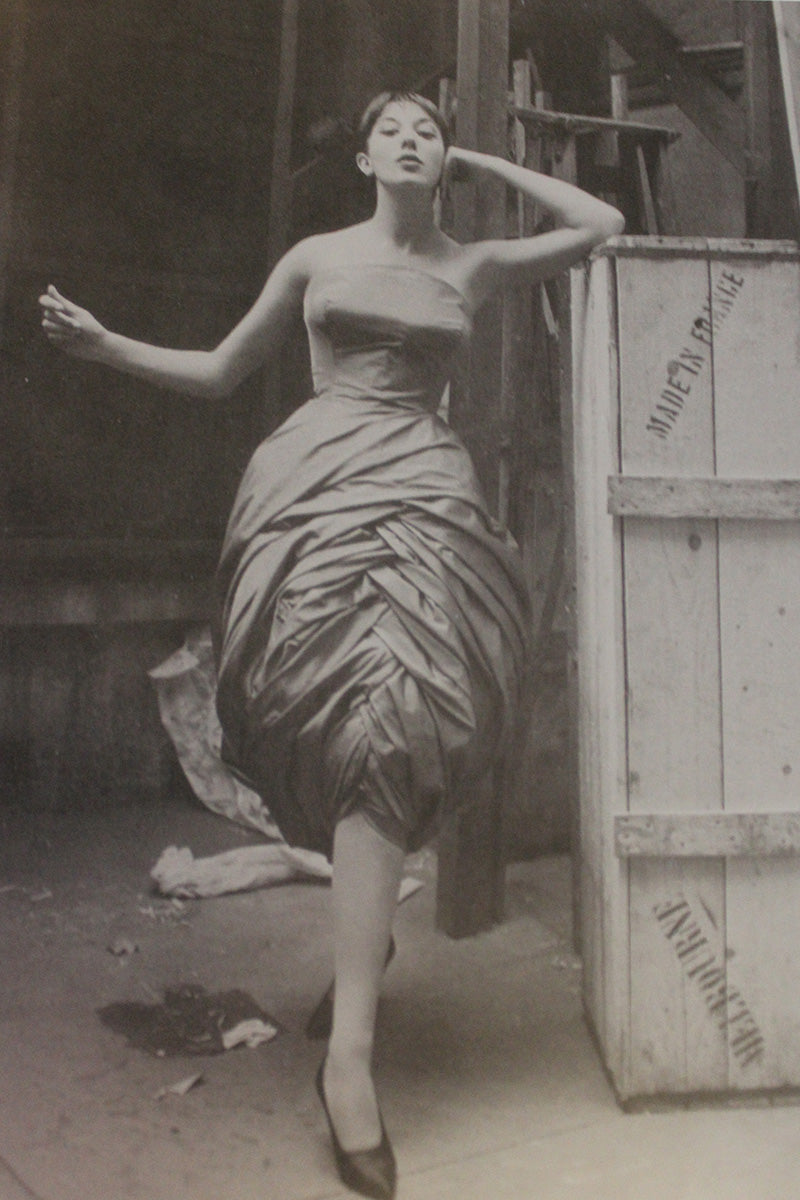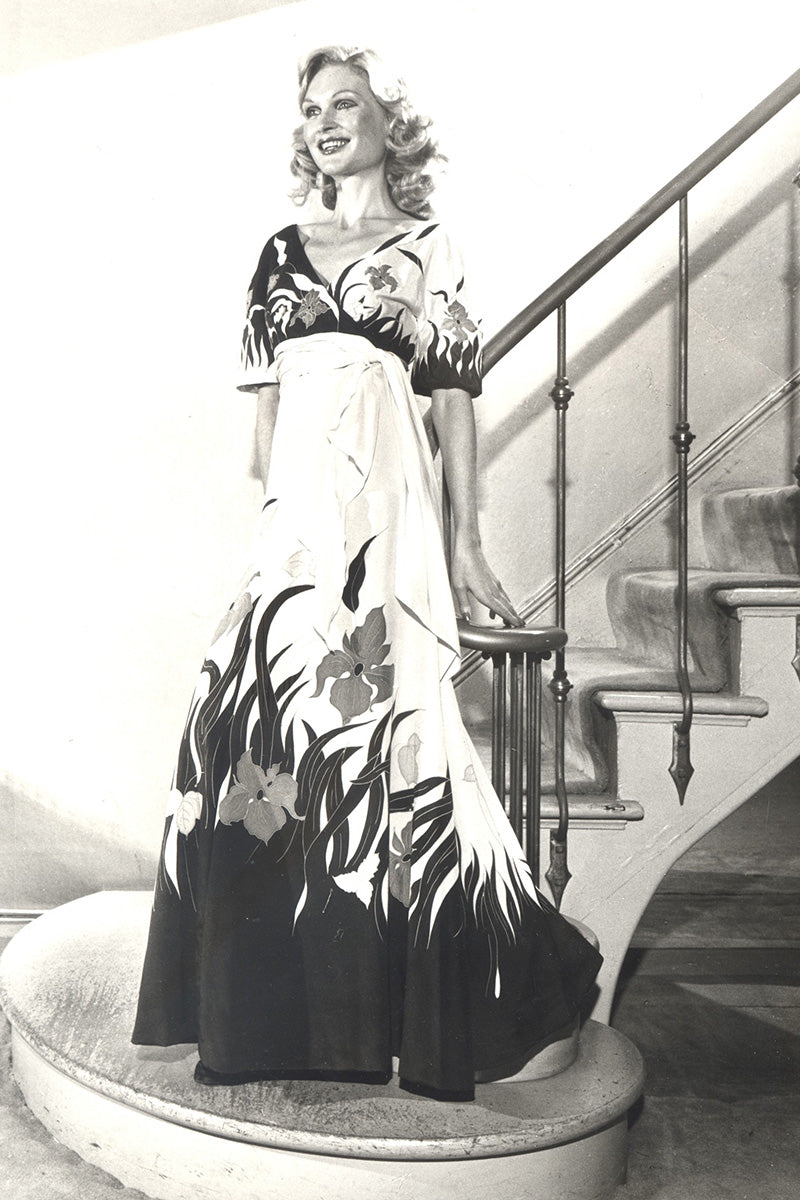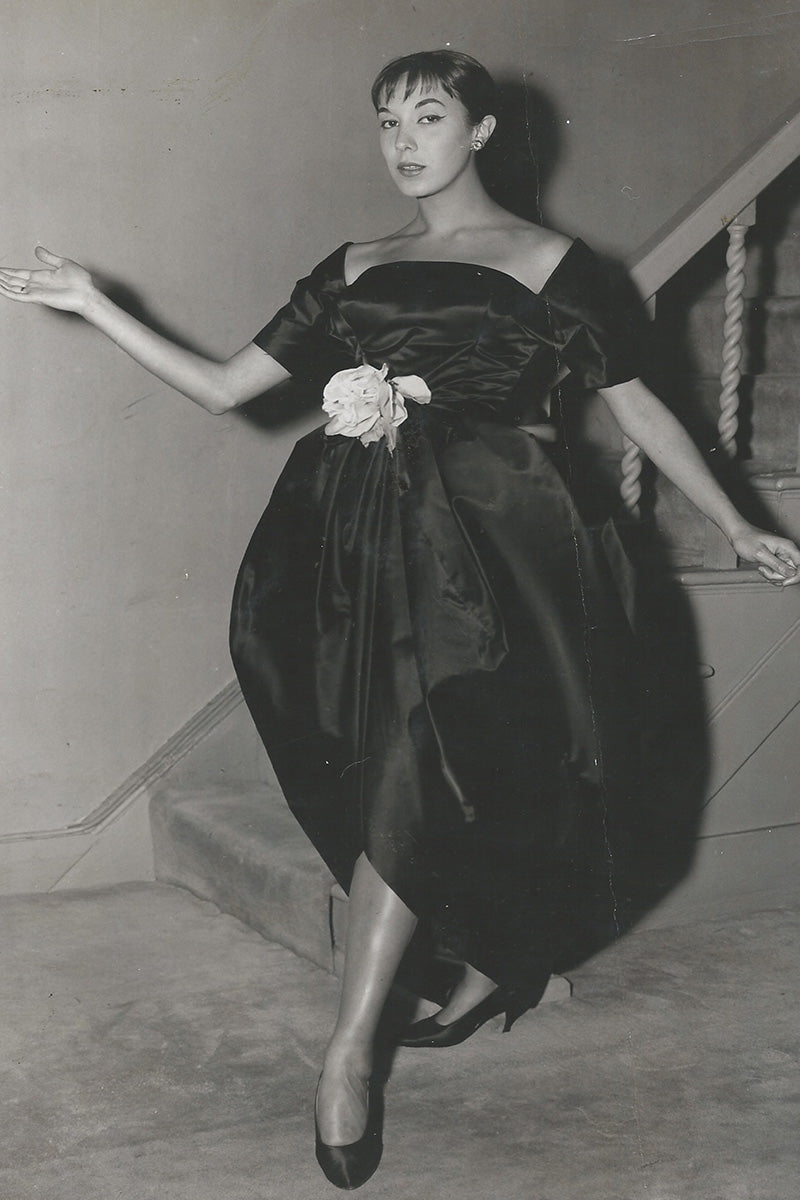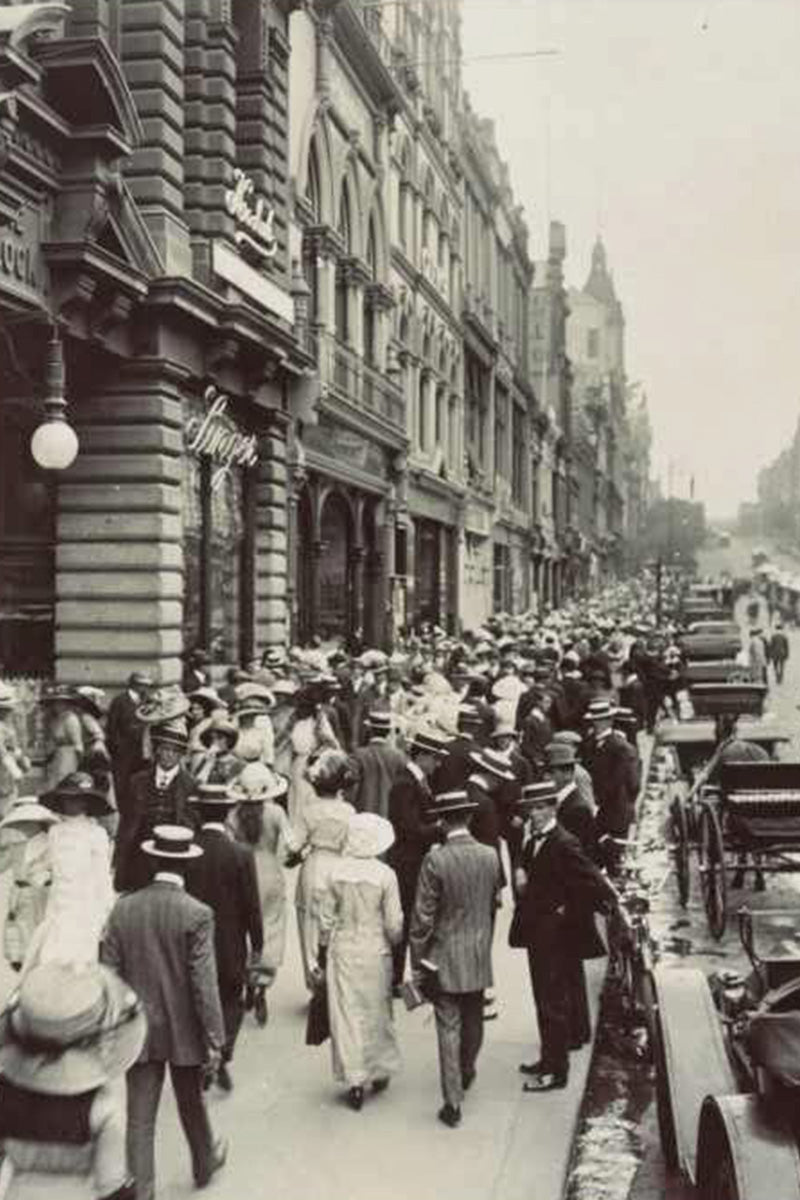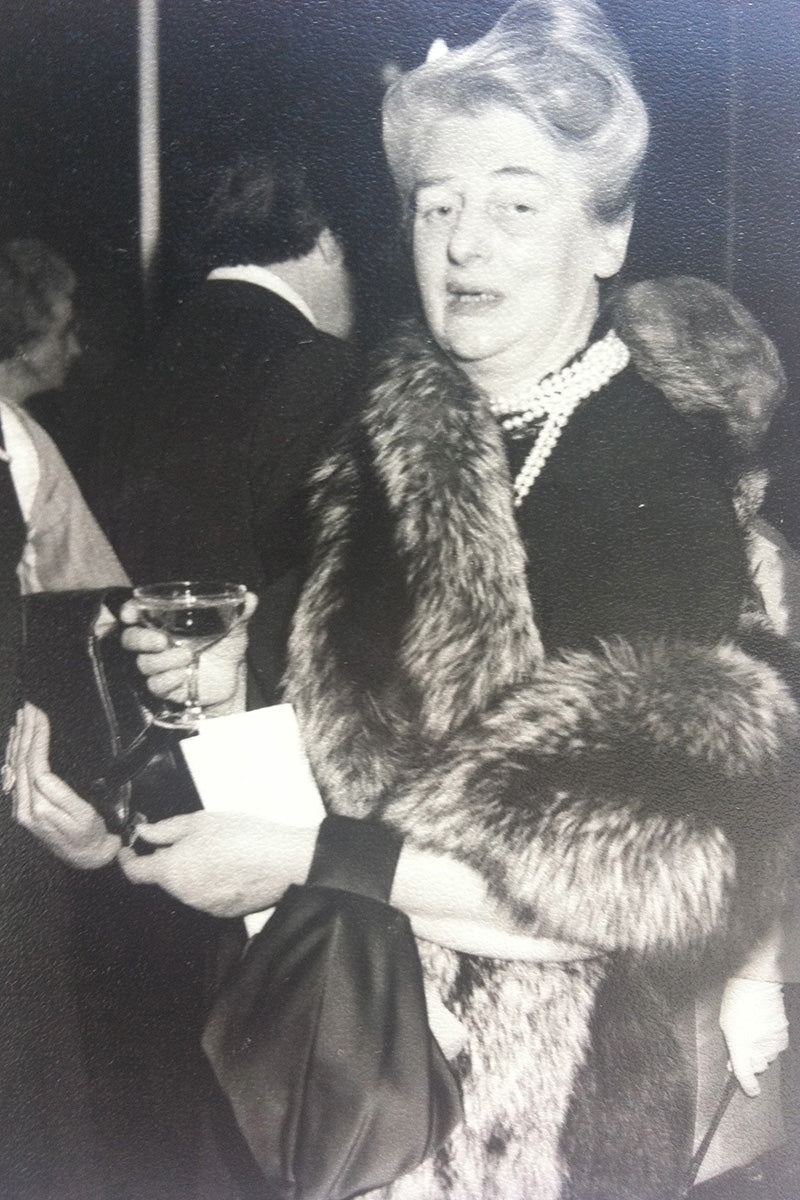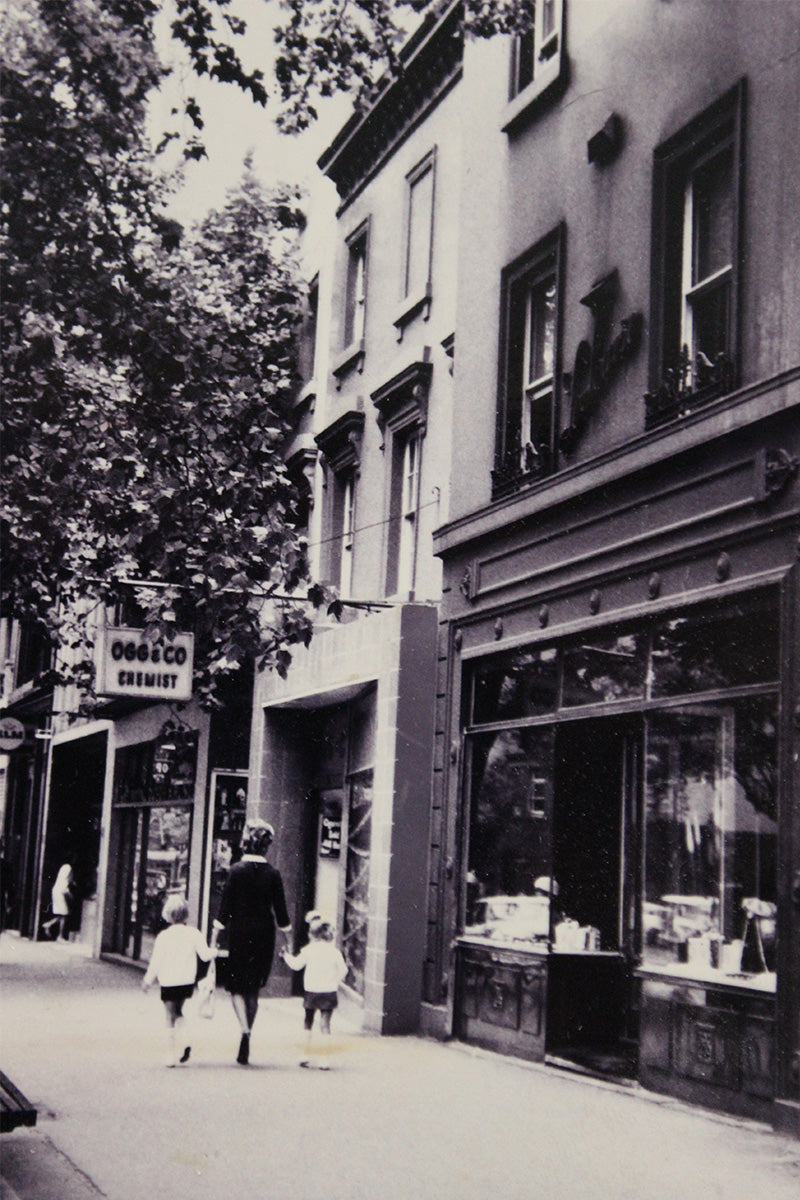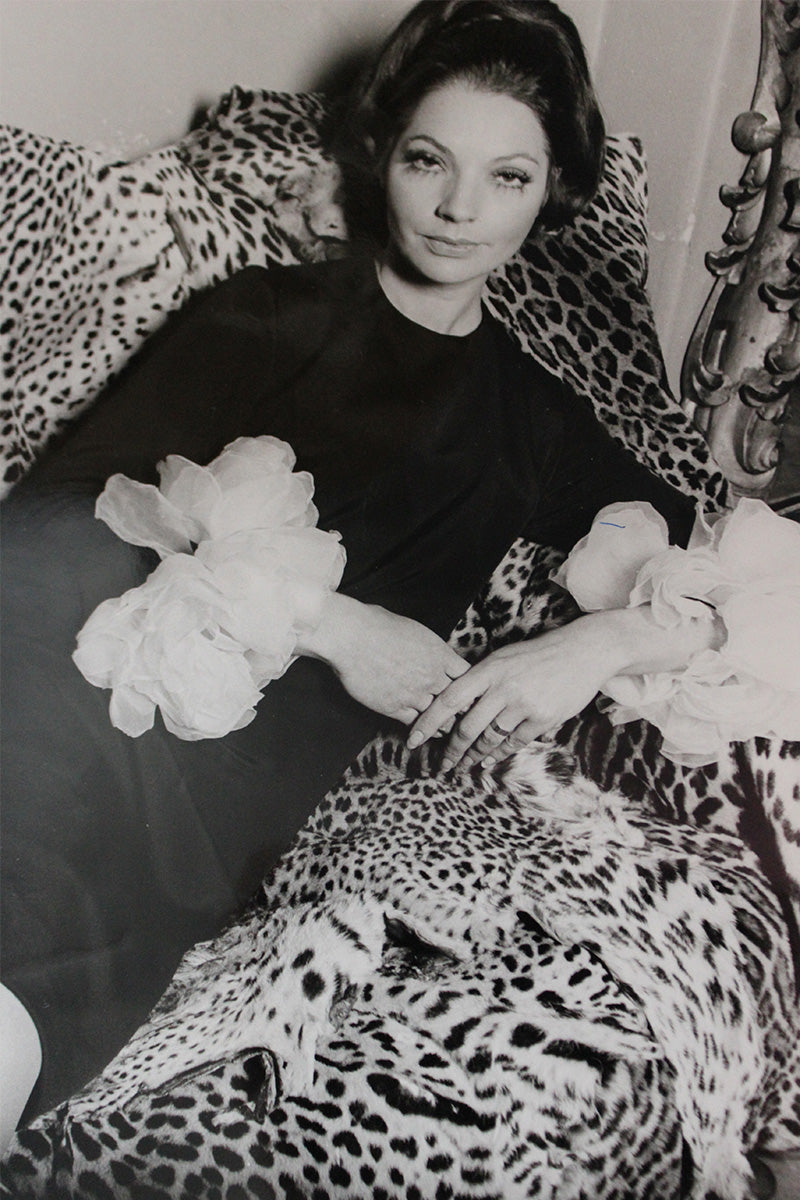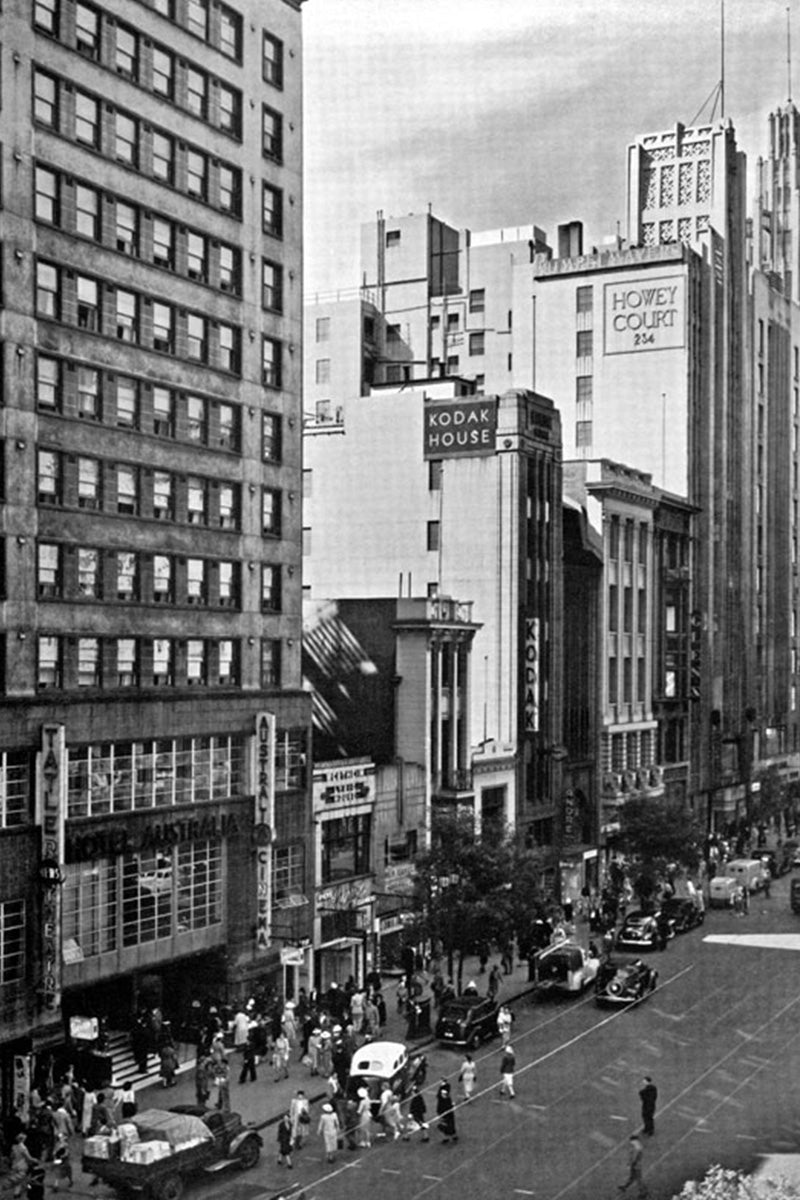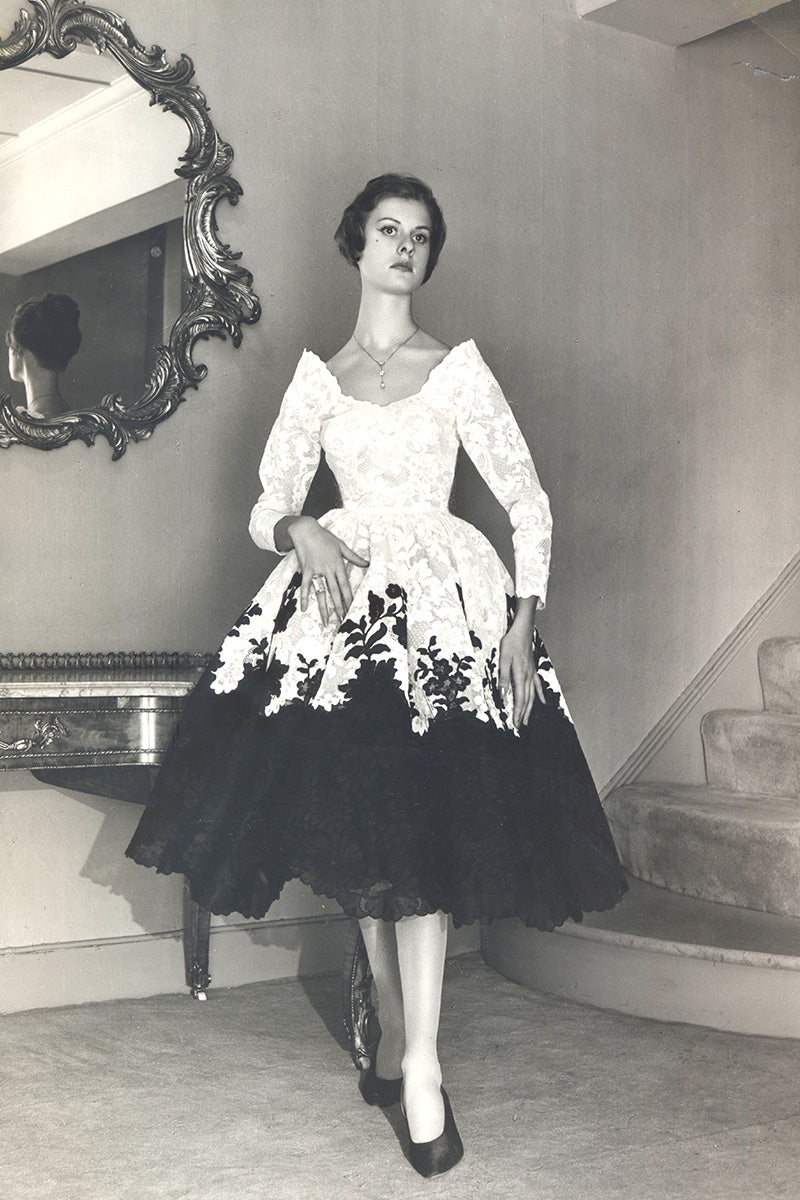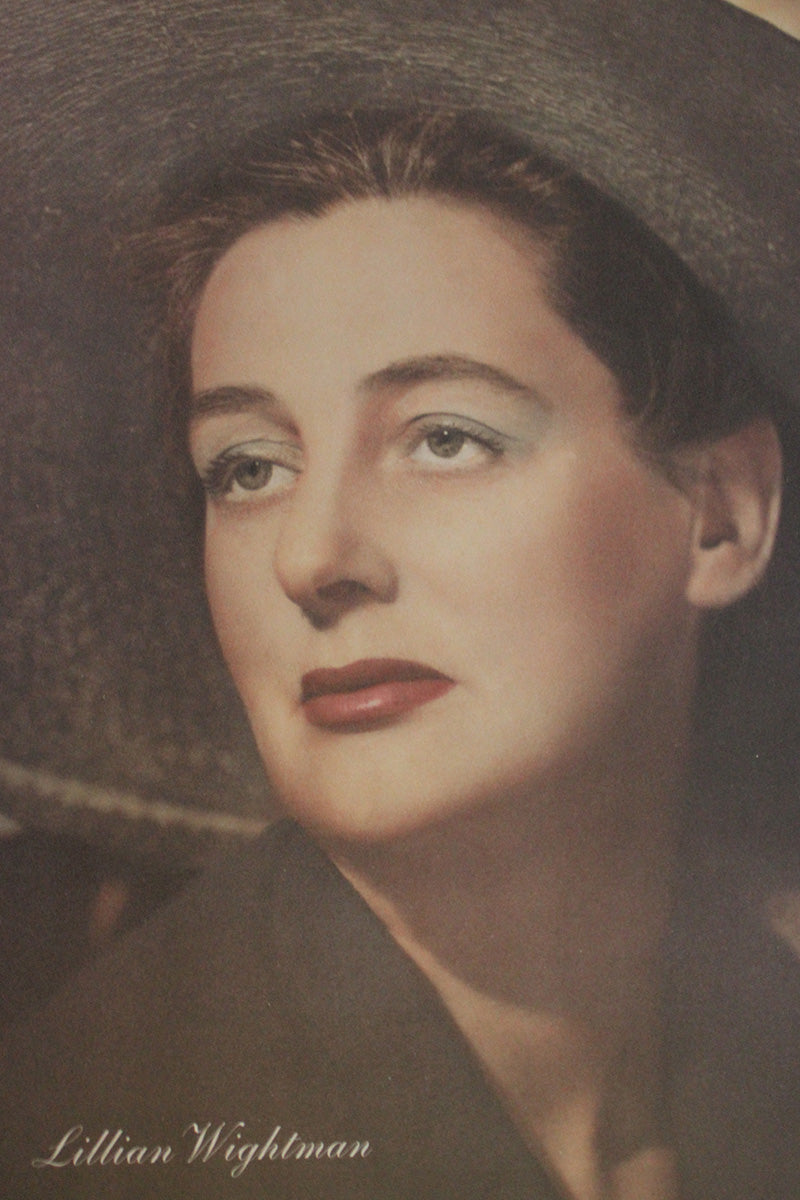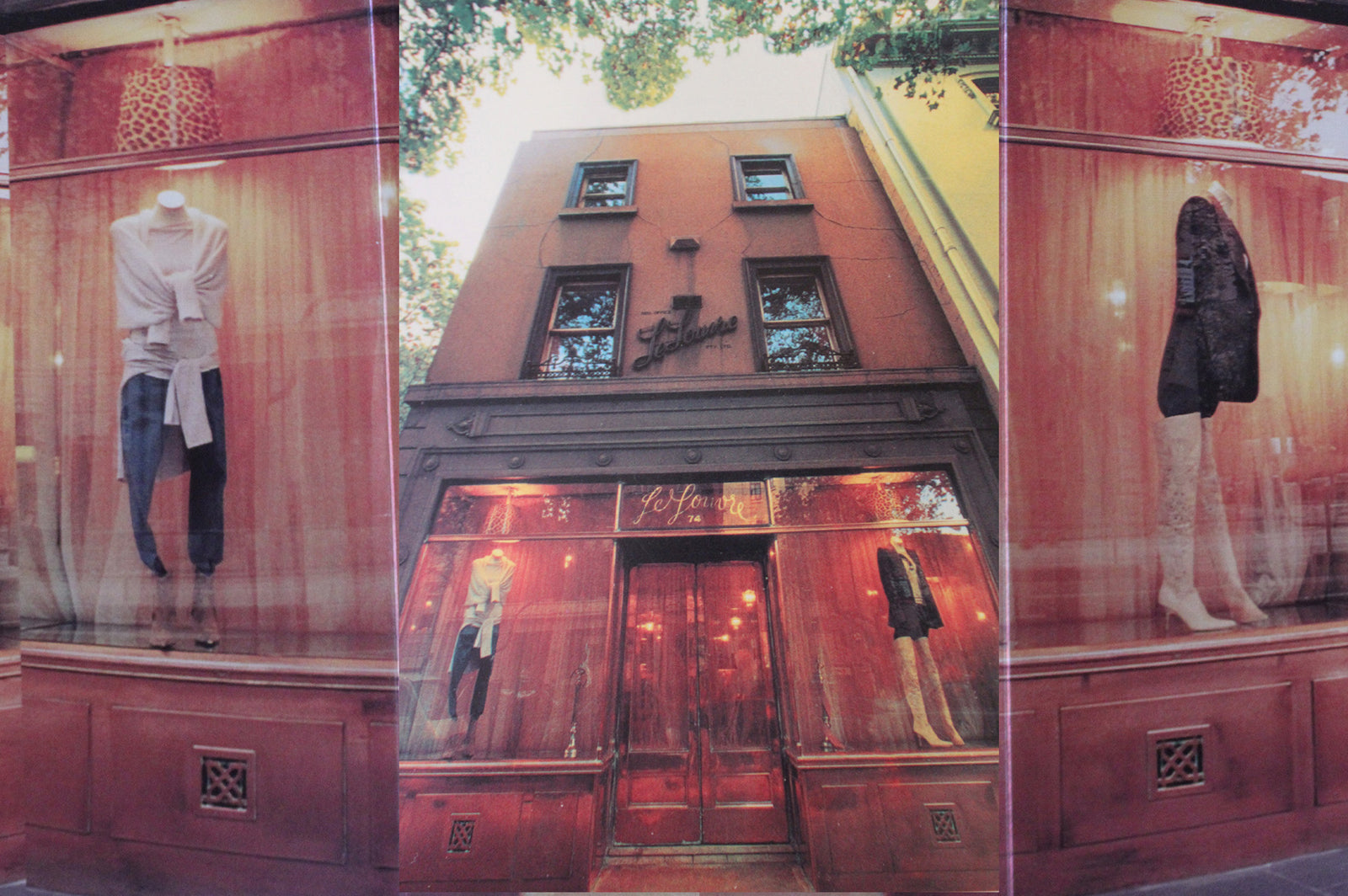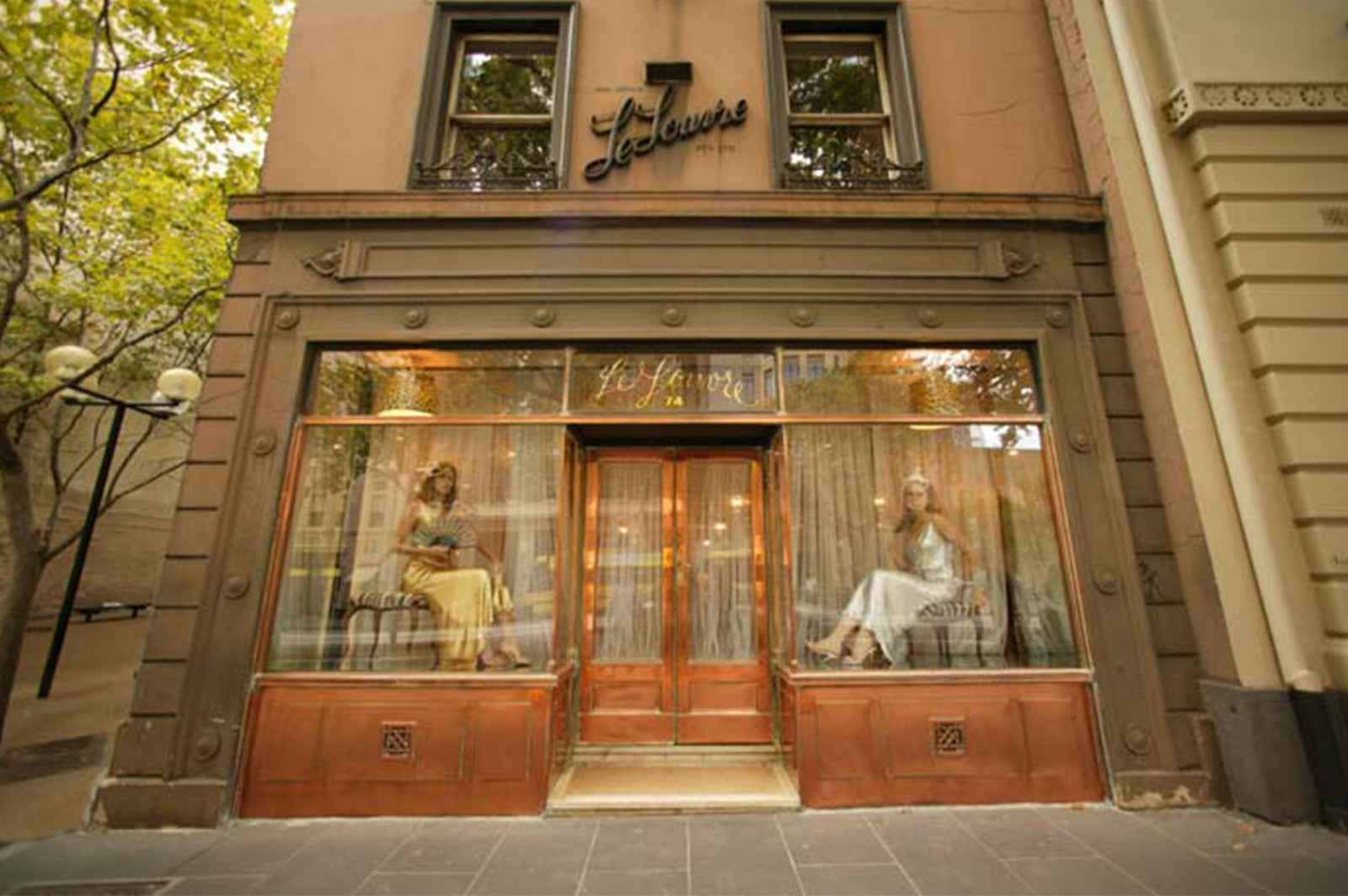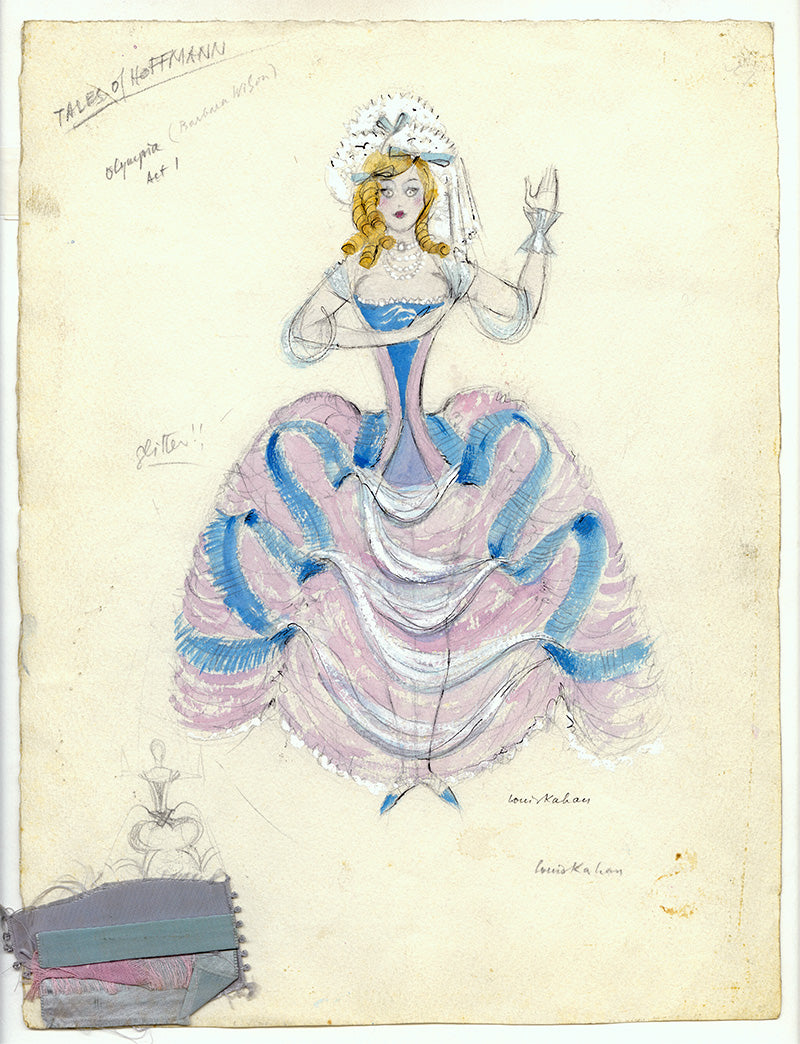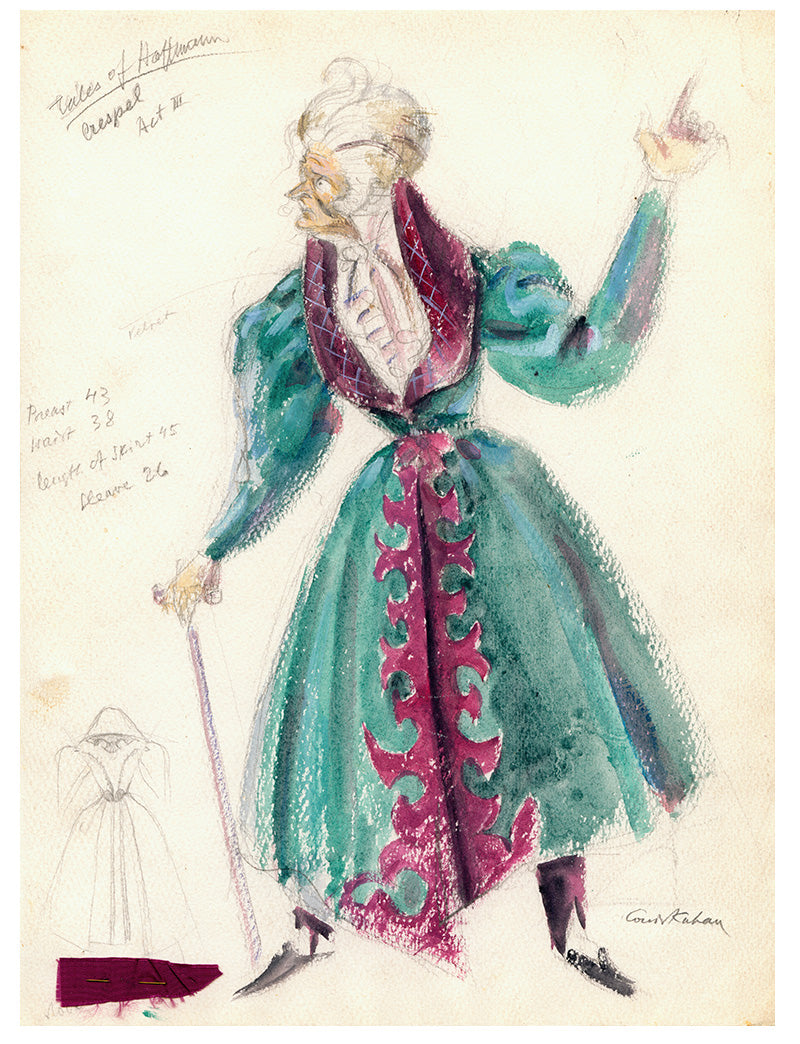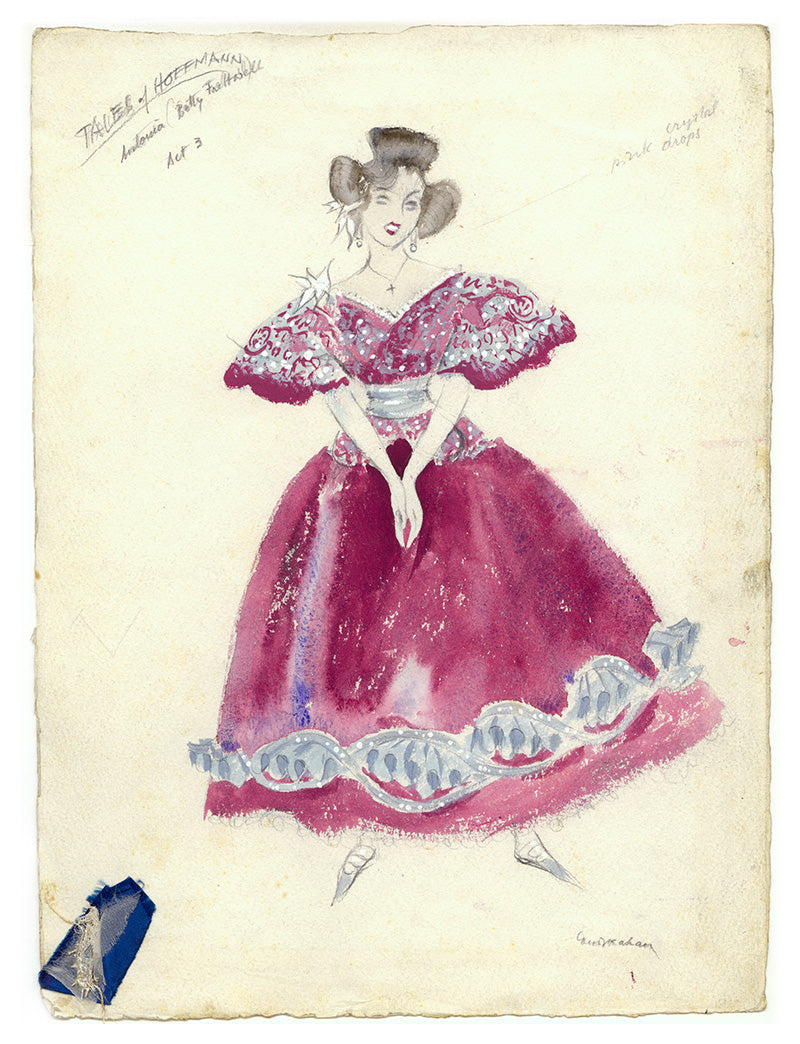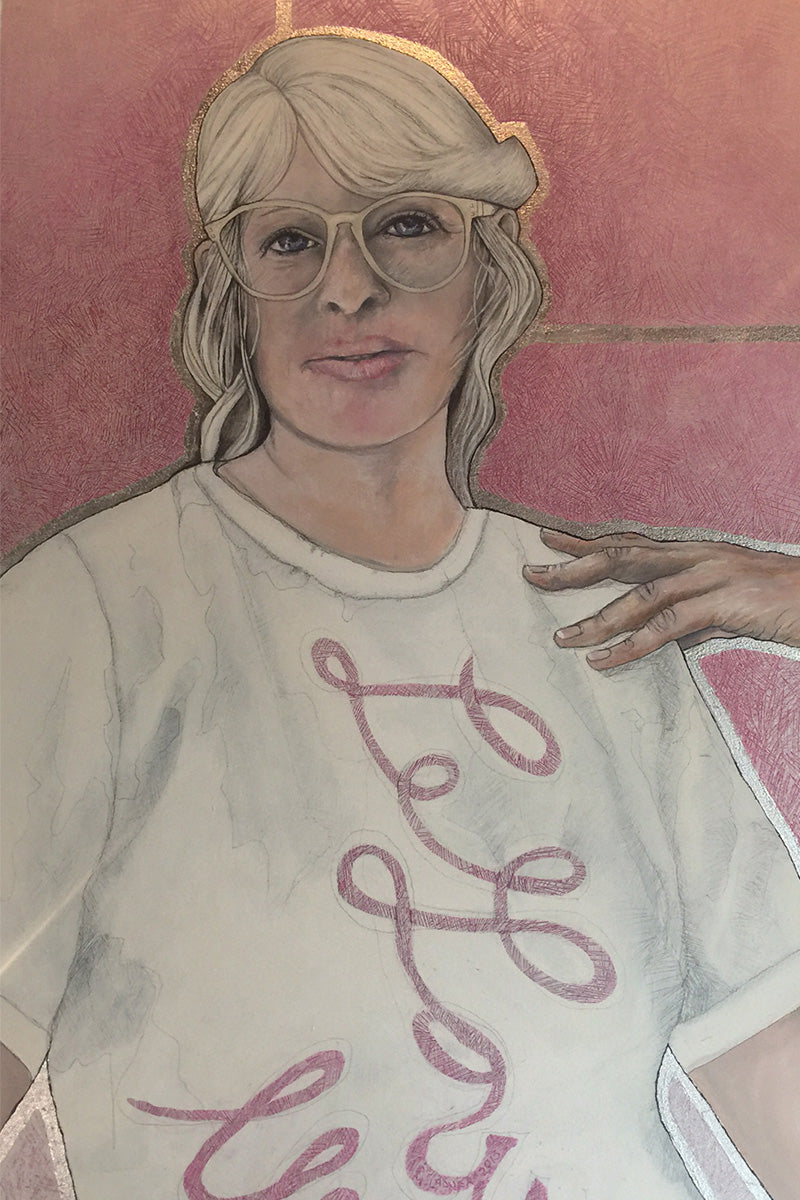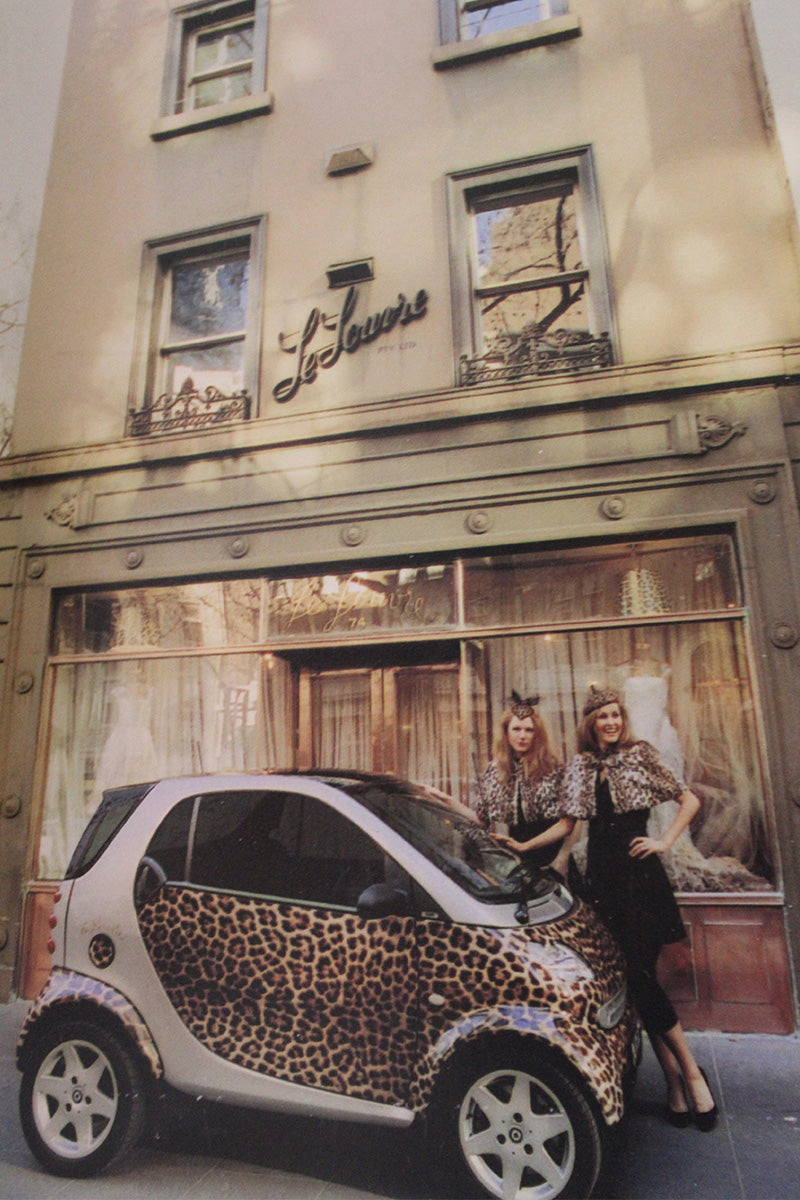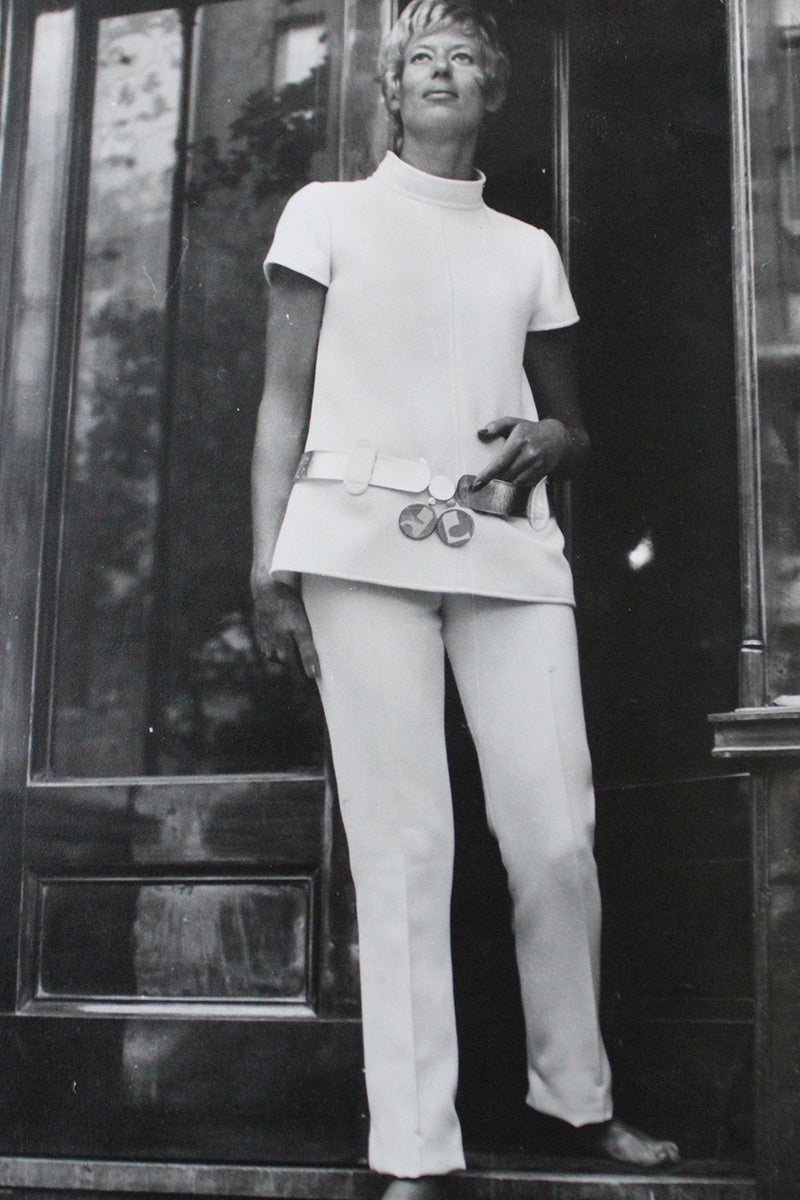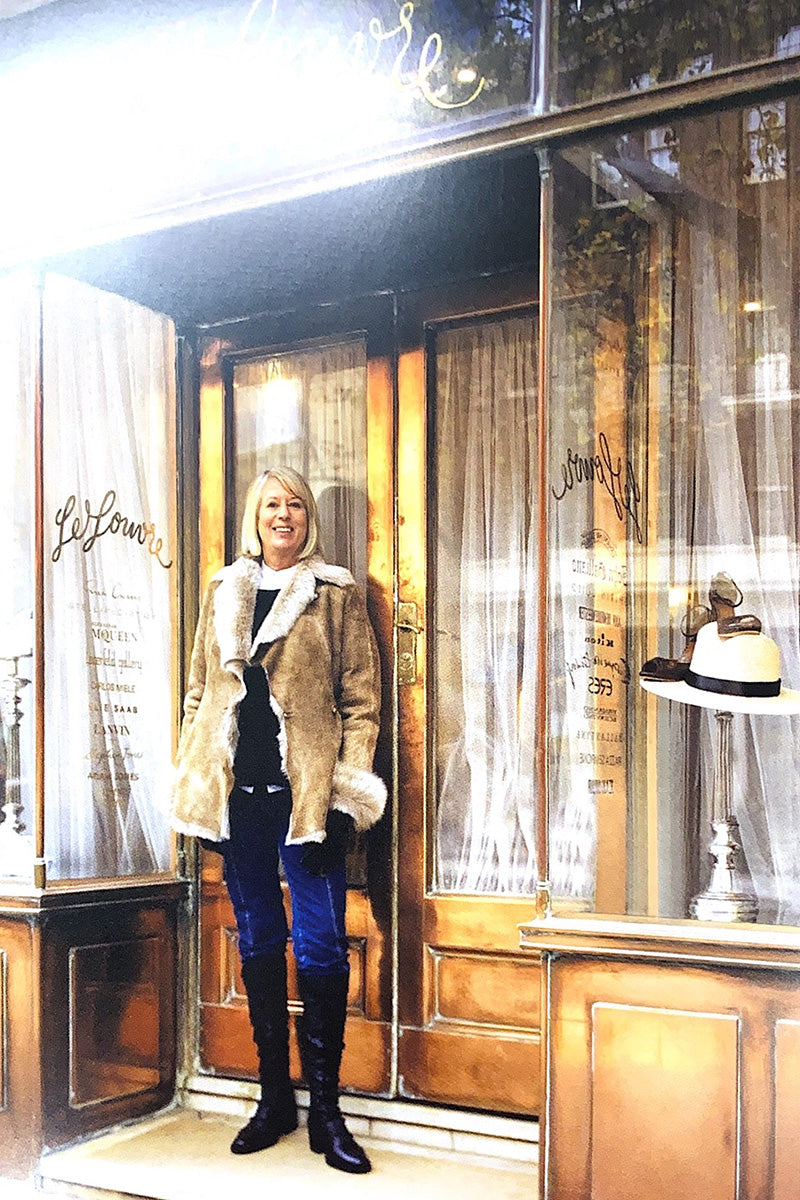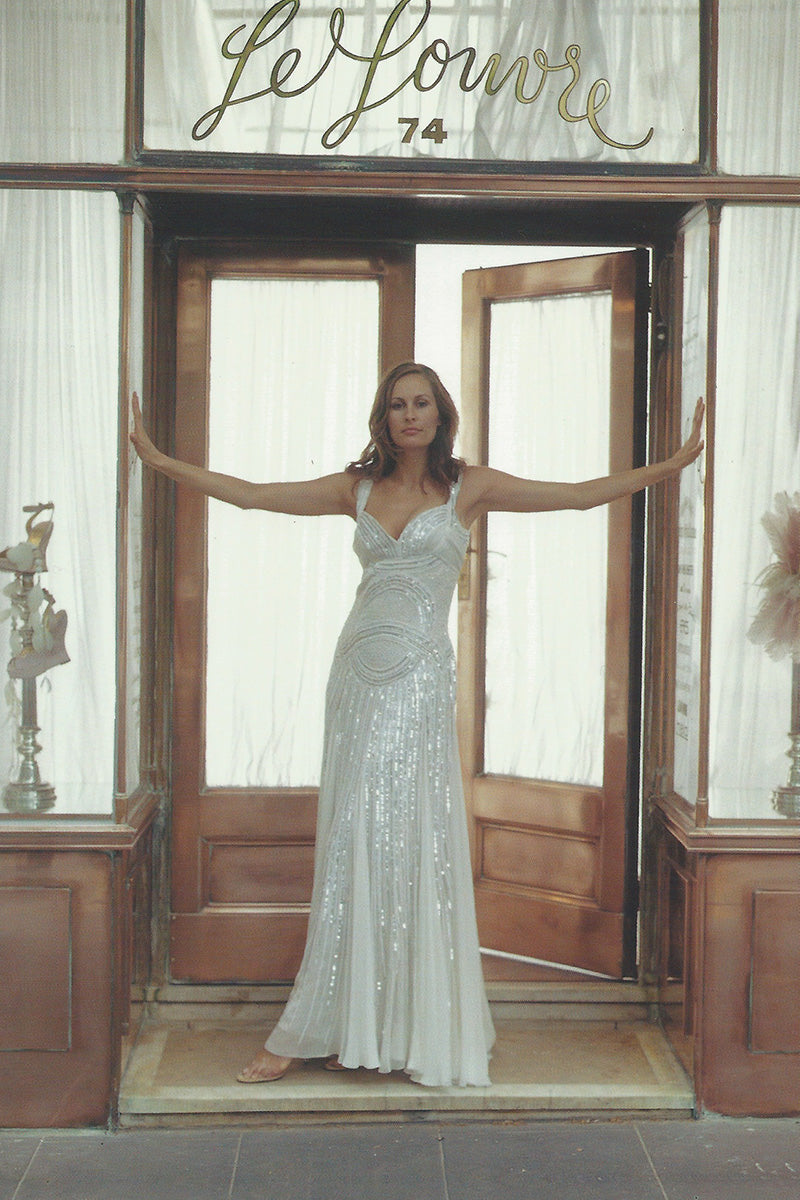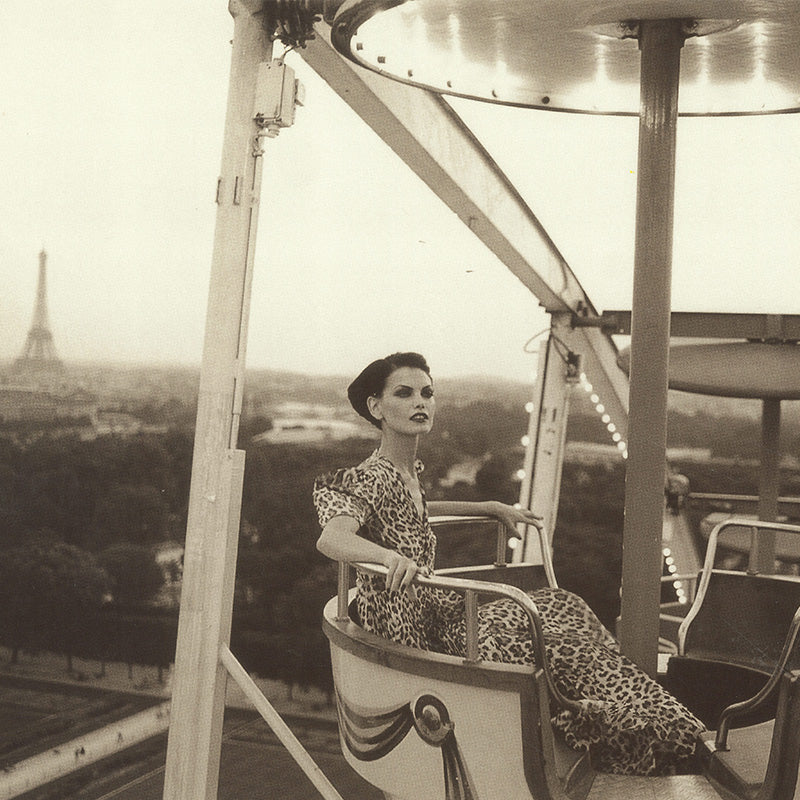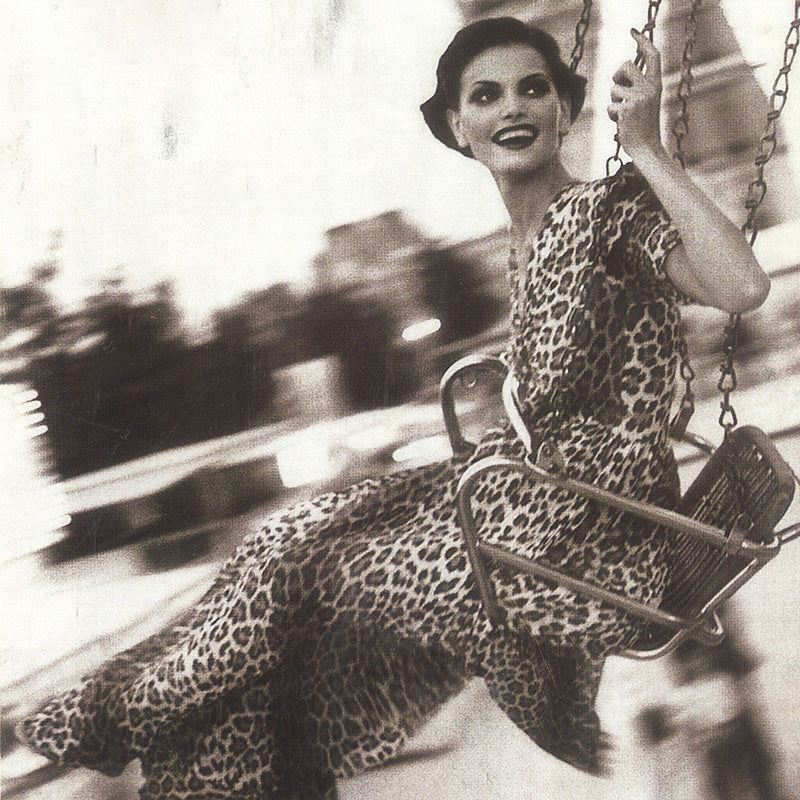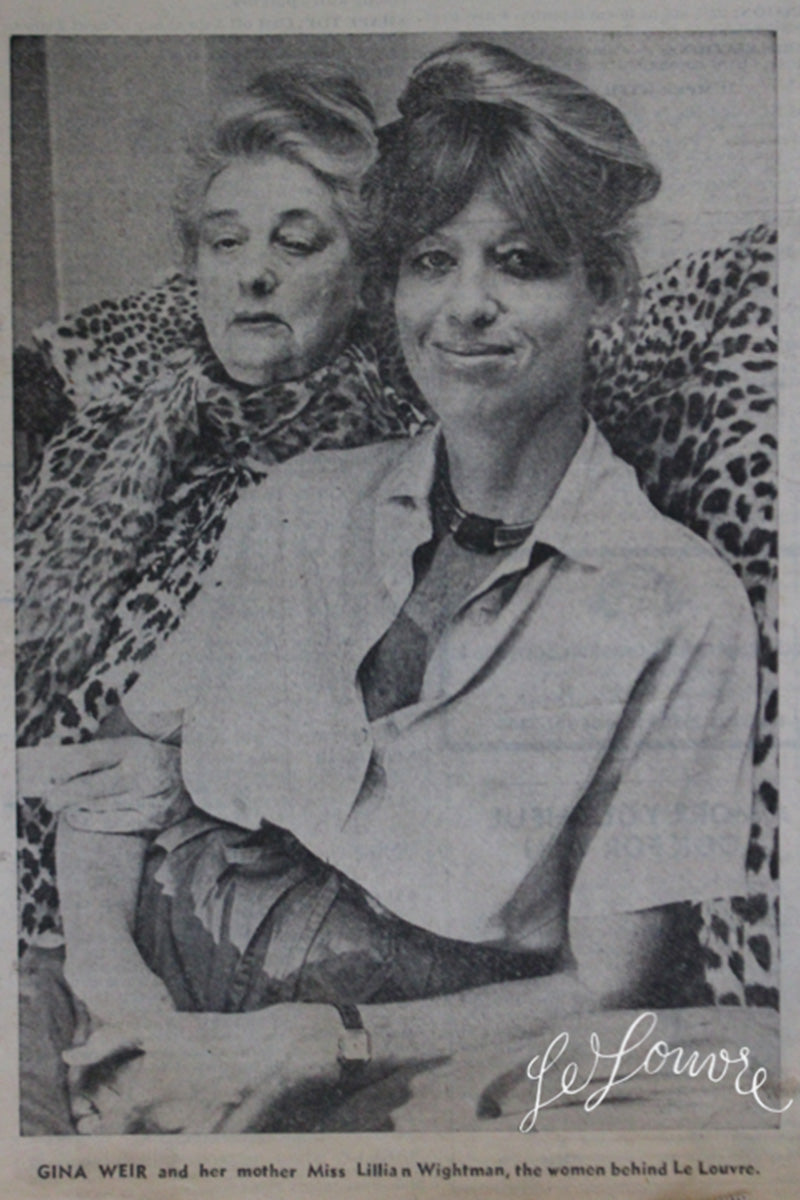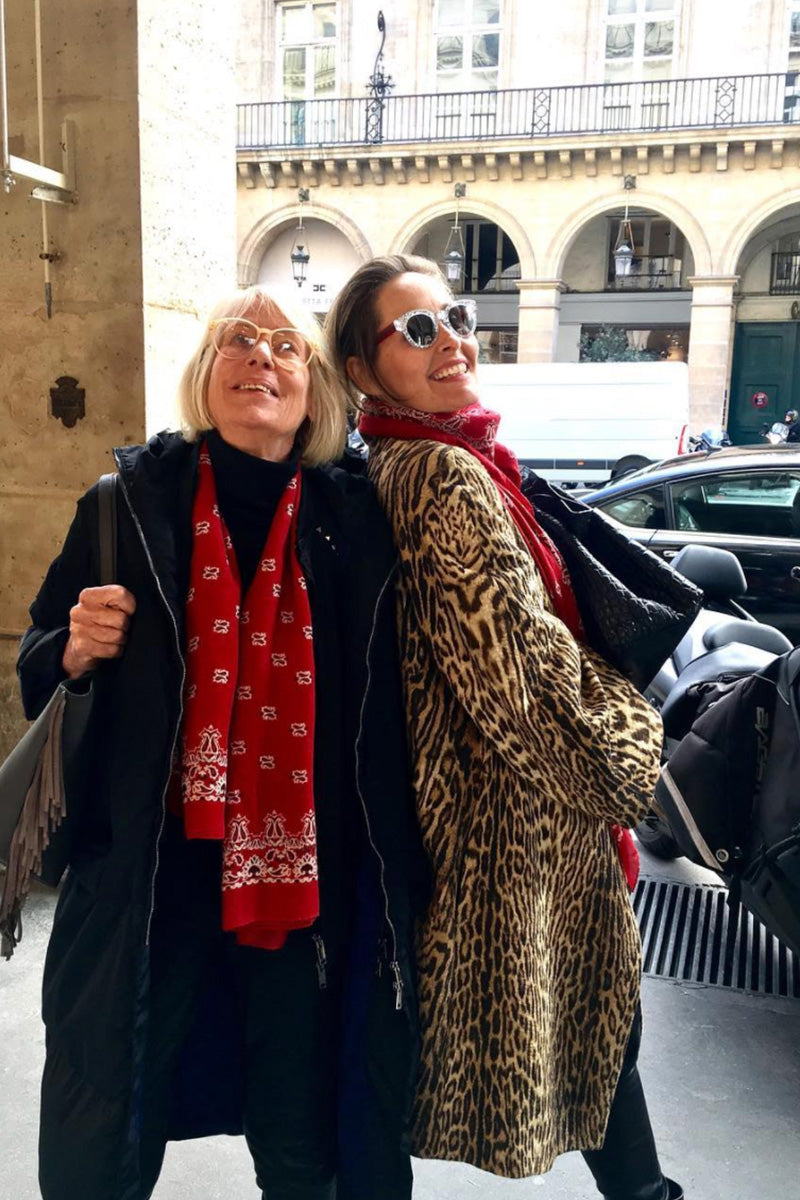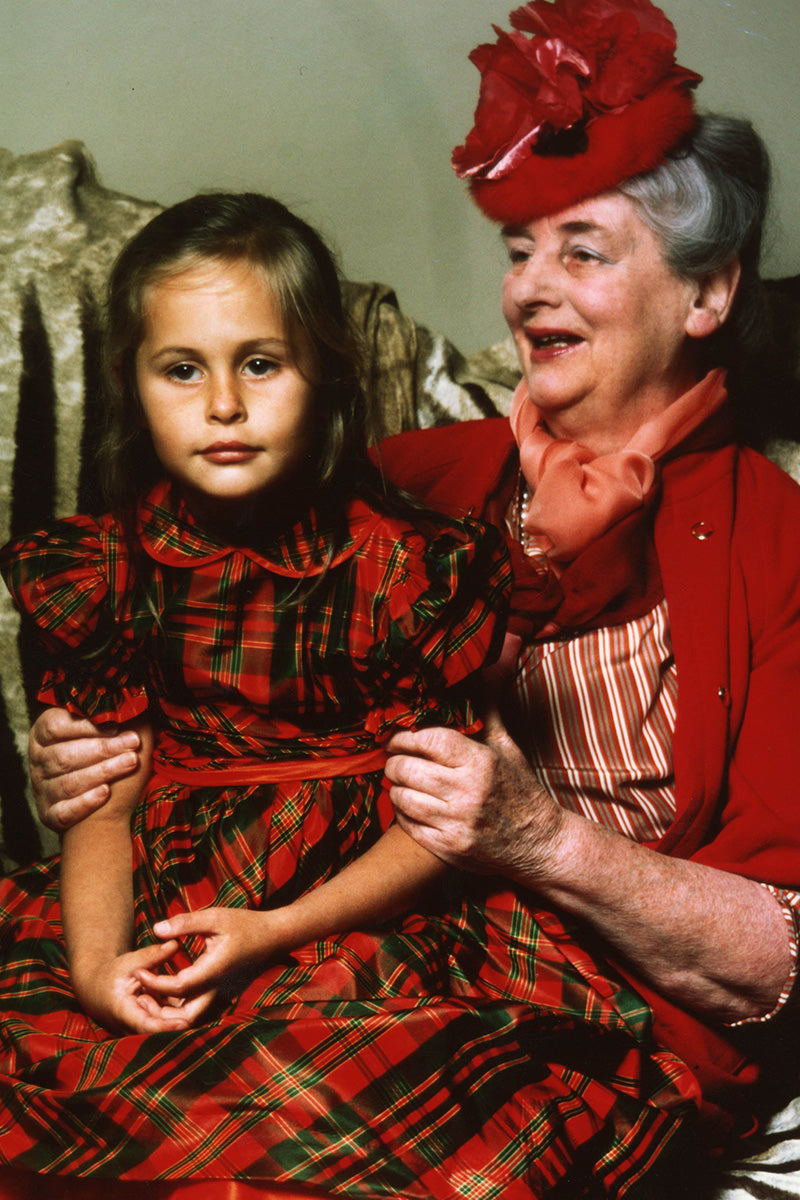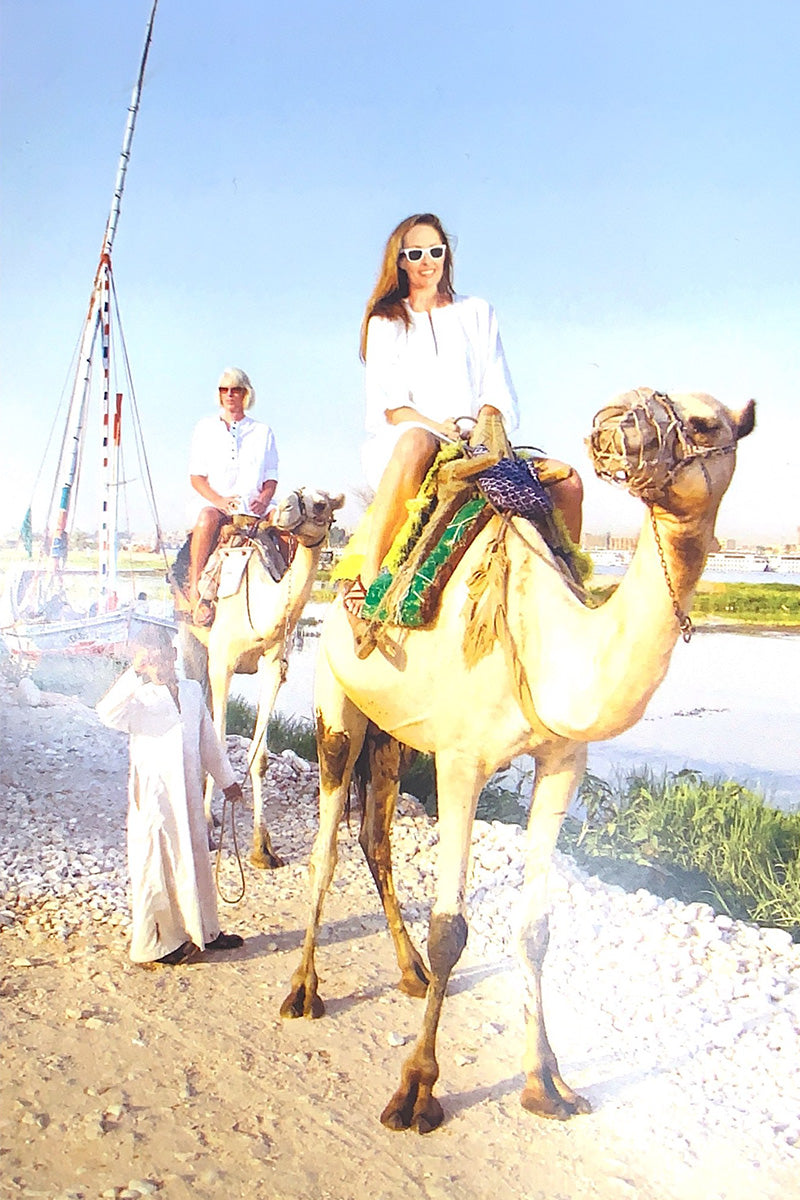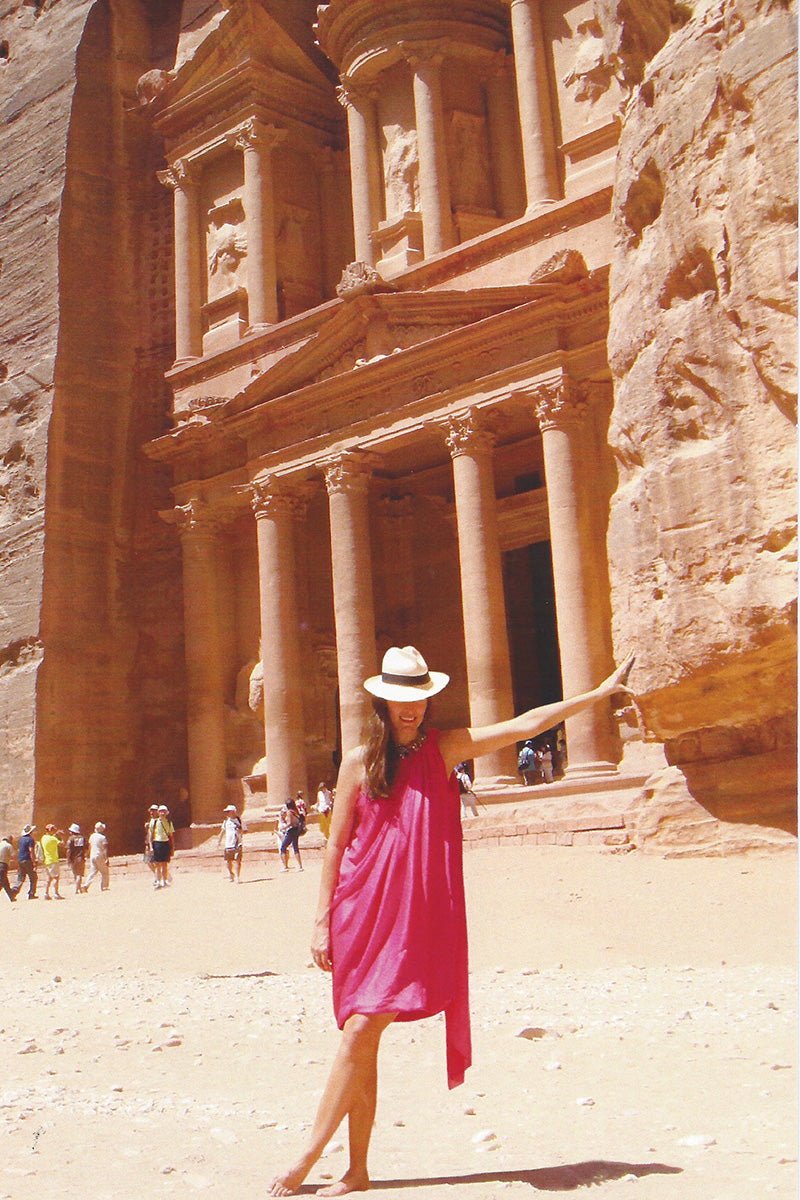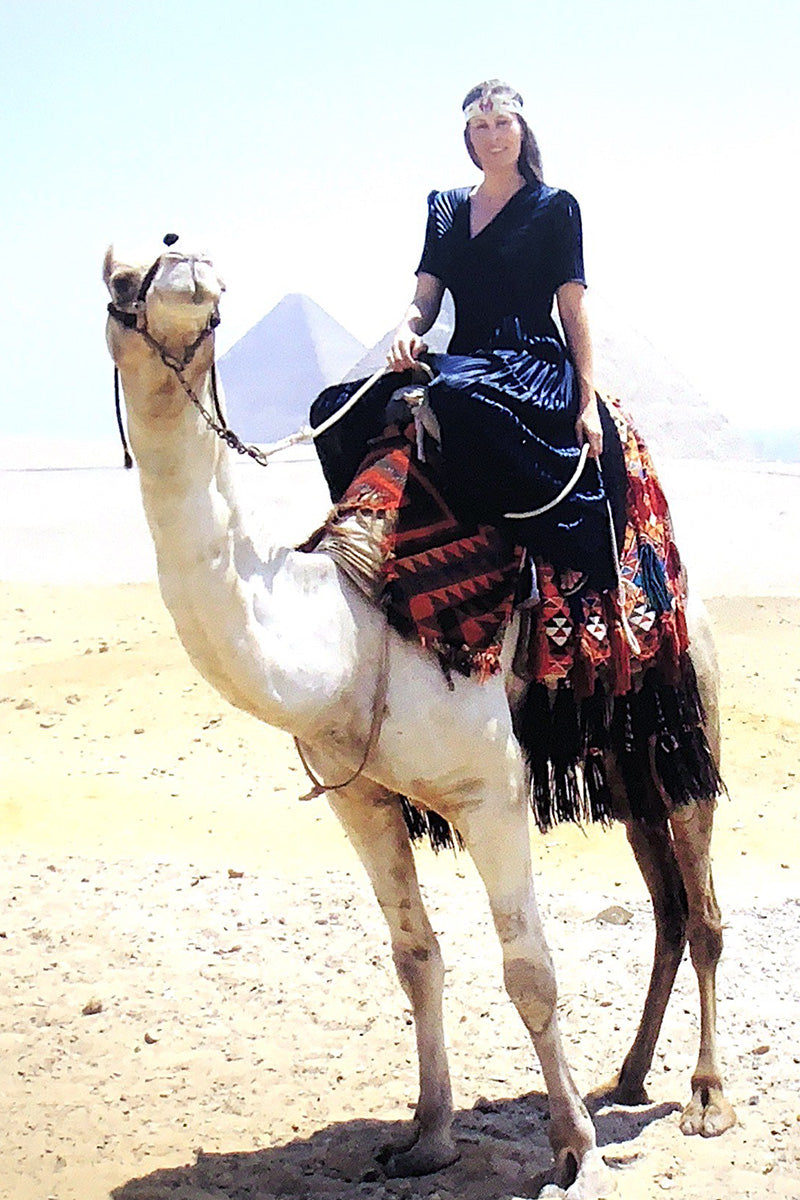Miss Lillian Wightman arrived from Ballarat, the small gold rush town in the Australian bush to 'Marvellous Melbourne'. The year was 1923. Miss Wightman opened the doors of Le Louvre in a small arcade called Howie Place, which was famous because 'to do The Block' (a series of lanes between the main city streets) was the only way for society women to shop. The name Le Louvre sounded French and a touch naughty to the young Miss Wightman, after all Mademoiselle Coco Chanel was the style princess of Paris.
Things went well in Howie Place, it was the wonderful Edwardian era and "what the hell" was the name of the game. Gals wanted pretty party frocks so yards of beautiful French chiffon were rolled out and made into wispy diaphanous creations. These young Melbourne debutantes were to become the leading ladies of Australian society and remained loyal friends of Miss Wightmans and clients to Le Louvre. Dame Nelly Melba even called in when an Ermine jacket in the window caught her eye and after a bit of fuss it was hers. It was not said if the jacket was paid for but by now the little shop was thriving and had outgrown Howie Place.
It was then that the fresh fields of Collins Street beckoned Miss Wightman. There were no shops in this part of Melbourne. This did not deter as it was inhabited by Melbourne's best doctors who had money and therefore their wives could afford to spend. This was 1934 and Lillian Wightman was ready to fly. She found a three-storey terrace house at the top end of Collins Street, which would become her internationally famous French salon after which the term "Paris end of Collins Street" was coined.
Miss Wightman read every book that would give her an insight into the great salons of Paris. It was not to be just a shop, Le Louvre had to have atmosphere and beautiful surroundings! Young Miss Wightman from Ballarat dreamt up this magic space with huge gilt mirrors, leopard skins draped over sofas, swags of fabric tossed in reckless abandon and crystal chandeliers. A long awaited voyage to New York saw Miss Wightman meet Elsie De Wolf, the great American decorator who became a great inspiration. Upon, her return to Australia the salon was enhanced by added gilding, glittering silvered walls and mirror everywhere. Le Louvre became a true salon in every sense of the word. Artists, storytellers and people of interest found their way to 74 Collins Street where Miss Lillian Wightman held court for over 40 years until her daughter Georgina Weir introduced the new phenomena of European Ready-to-wear in the 1970's. Designers such as Lagerfeld, Yves Saint Laurent and Georgio Armani were now available to the discerning young fashionistas of Melbourne.
In the year 2010, under the reign of Georgina Weir, Le Louvre moved from Collins Street to South Yarra. As the title song from Casablanca says 'as time goes by' things must change and the prospect of a large redevelopment for Collins Street meant that Le Louvre was on the move. A sudden piece of luck in the form of a 1930's Palladian style tram depot was up for lease. Tucked away in a side street off the river end of Chapel Street this shell of a building was to once again become a salon filled with beautiful things from all over the world in the true spirit of Le Louvre.
So Le Louvre South Yarra has now emerged. The original gilt mirrors, Regency desks, mirrored walls and the iconic Le Louvre logo remain, made all the more special with Lucite chairs, tables and lights from London, silver and white crocodile skin sofas from Paris, Art Deco painted mirrors fromBrazil. An extraordinary mix of style together with ever-changing fashion sourced from all corners of the world.
A significant part of Le Louvre's 90-year history is the idea that fashion, art and design are one and that together they create a unique and wonderful experience. This is something that is often lost in the new era of fast, internet-fuelled fashion. To see the beauty in buying a Lanvin wedding dress at Le Louvre has to be experienced in order to understand the difference.
